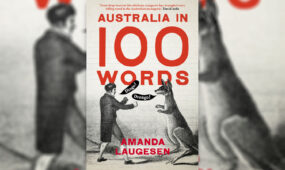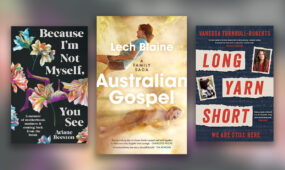William Boyd's Sweet Caress
Books & Poetry
This latest novel by William Boyd has a beguiling premise. It purports to be a memoir written by a woman photographer in the late 1970s, looking over the extraordinary life she has led through many of the conflicts of the 20th century.

Amory Clay was in Berlin in the 1920s and brushed with the early Nazi thuggery at a time when they were considered idiots by most Germans. Then she went on a jaunt to America in the late 1920s.
In 1930s England, she is caught up in Mosley’s fascist riots. She sees action in World War II, and later the bug bites her again and off we all go for a Vietnam experience. Quite a lot to interest the reader, really.
But is it too much? The writer takes us into places and out of them and on to the next in a kind of Bunnik’s tour of 70 years.
I kept wondering whether the problem with this novel might be the central character herself. She has a feckless aspect to her personality: her photographic career is formed by her uncle, who gives her a camera and with whom she falls rather gormlessly in love for a little while (until she jumps into bed with him naked one night and he tells her he’s gay).
Her breaks in life thereafter come from lovers or former lovers – she never works hard at anything. She has a desire to see action in World War II, but after a day in which she sees a bloke riddled with bullets, she’s had enough.
She falls for a captain who just happens to be a Scottish laird and baron, and marries him (pity about his war-memory-fuelled single-malt alcoholism). Then later she takes a fancy to reporting in Vietnam and does exactly the same thing as she did in the WWII: she sees someone blown up, then decides to return to base and do a book on soldiers behind the lines. Yukky fighting.

Get InReview in your inbox – free each Saturday. Local arts and culture – covered.
Thanks for signing up to the InReview newsletter.
The plot turns on a range of clichéd plot situations. Amory’s adventure in the fascist riots has her kicked savagely in the abdomen so she can never have children. Then after she meets the fourth love of her life she miraculously recovers and has twins (not identical, that would have been too much). Indeed, the girls are very different and there lies another device as one goes off to be exploited by a fraudulent Californian hippy commune leader who only wants her for her money. Now where have I heard that one before? There are echoes of Gore Vidal’s Kalki and many others in this section.
But this final trope is probably the only one that Amory conceived and executed for herself, as she used her own money for the plane ticket.
Eventually we get to the meaning-of-life section – the epistemology of the whole work. How much do we ever know about other people, even, or especially, our own children? The interior life of those closest to us remains a mystery. Good point, but it has to be asked whether we have ever really been treated to the interior life of the main character herself and we must ask whether it was the intention of the novelist to be mysterious about her. I didn’t see anything that made me think so. I think she was supposed to be simply marvellous, possibly even a fantasy figure, but comes off flat.
Amory’s trip through history is too pat, too predicted; her adventures are those of the news headlines of her era, and there is a character lurking behind the deeds which is never fully realised.
Support local arts journalism
Your support will help us continue the important work of InReview in publishing free professional journalism that celebrates, interrogates and amplifies arts and culture in South Australia.
Donate Here






Comments
Show comments Hide comments